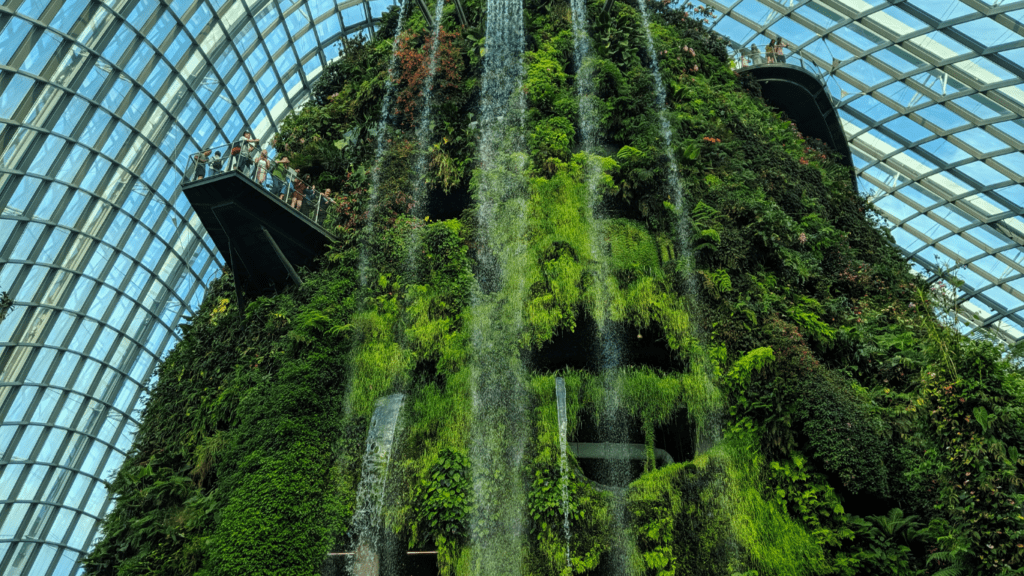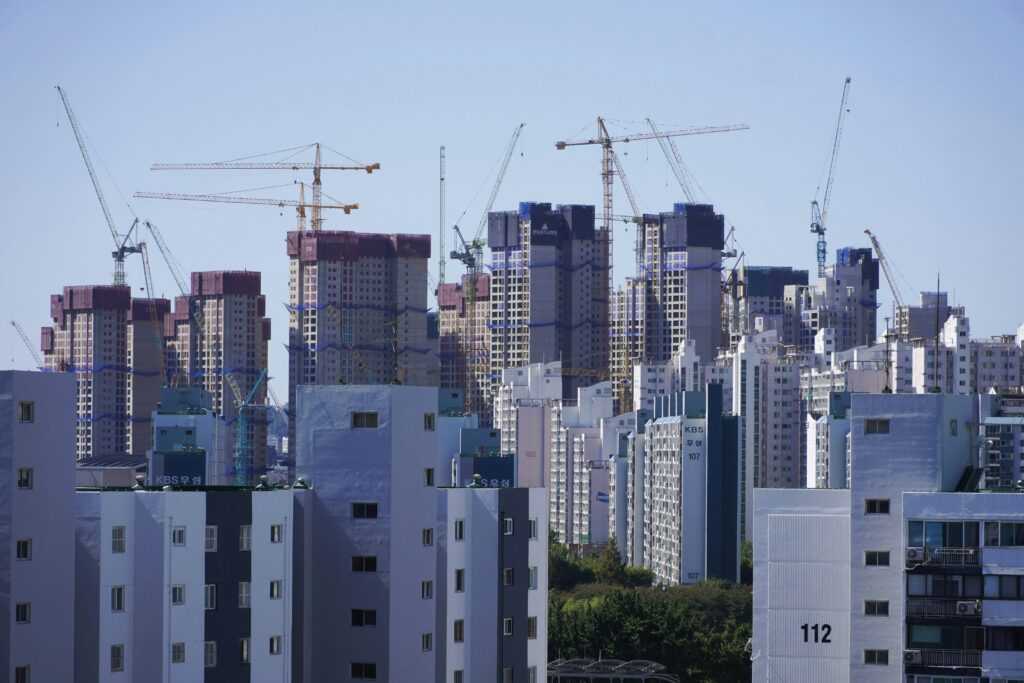As someone deeply immersed in the real estate industry, I’ve witnessed a significant shift towards sustainable practices and green building initiatives in recent years. The integration of environmentally friendly solutions has become a cornerstone of modern real estate development, driven by a growing awareness of the impact of construction on the planet.
From energy-efficient designs to eco-friendly materials, the sector is embracing a more sustainable approach to meet the demands of both investors and consumers. In this dynamic landscape, staying informed about the latest trends and innovations in green building is crucial for real estate professionals looking to stay ahead of the curve.
As sustainability continues to shape the future of the industry, understanding the evolving practices and technologies is essential for success in today’s market. Join me as we explore the exciting world of green building and sustainability trends shaping the real estate sector.
Evolution of Green Building
Green building practices have evolved significantly over the past few decades. I’ve witnessed a notable shift towards more sustainable construction methods and environmentally friendly designs in the real estate sector. It’s inspiring to see the industry embracing energy-efficient solutions and incorporating eco-friendly materials into their projects.
In my experience, this evolution is primarily driven by a growing awareness of the environmental impact of traditional construction practices. It’s becoming increasingly clear that sustainable building not only benefits the planet but also offers economic advantages to developers and owners in the long run.
As a result, more real estate professionals are recognizing the importance of staying updated on the latest green building trends to meet market demands and outperform competitors. By staying informed and adopting innovative green technologies, real estate professionals can enhance the value of their properties, reduce operating costs, and attract environmentally conscious tenants and buyers.
The evolving landscape of green building presents exciting opportunities for industry players to lead the way towards a more sustainable future.
Importance of Sustainability in Real Estate
In real estate, sustainability plays a crucial role in shaping the industry’s present and future landscape. Sustainable practices and green building initiatives are no longer just trends but vital components of modern real estate development. As a real estate professional, staying abreast of sustainability practices is not only beneficial but essential for success in today’s market.
Sustainability in real estate offers a multitude of benefits, ranging from environmental conservation to financial advantages. By embracing energy-efficient designs, eco-friendly materials, and innovative green technologies, property developers can significantly enhance the value of their projects.
Moreover, sustainable buildings lead to reduced operating costs, making them economically advantageous in the long run. One of the key aspects driving the adoption of sustainability in real estate is the growing awareness of the environmental impact of traditional construction practices.
As such, incorporating sustainable elements into property development not only aligns with global conservation goals but also attracts environmentally conscious tenants and buyers. The shift towards sustainable construction methods is reshaping the industry, creating exciting opportunities for industry leaders to pioneer a more sustainable future.
By prioritizing sustainability in real estate practices, professionals can contribute to a greener, more efficient built environment while also reaping the numerous benefits it offers. Embracing sustainability is not just a choice but a strategic decision that positions real estate professionals at the forefront of a rapidly evolving industry focused on creating a sustainable and resilient future.
Benefits of Green Building Trends
Green building trends offer numerous advantages in the real estate sector, ranging from energy efficiency to cost savings and environmental conservation. Let’s delve into the benefits in more detail:
Energy Efficiency
Enhancing energy efficiency through green building practices is a key benefit in the real estate sector. By incorporating features like solar panels, energy-efficient appliances, and advanced insulation, properties can significantly reduce energy consumption. This not only lowers utility costs for occupants but also contributes to a more sustainable future by decreasing overall energy demand.
Cost Savings
One of the primary advantages of embracing green building trends is the potential for long-term cost savings. Energy-efficient designs and sustainable materials can lead to reduced operational expenses for property owners. Additionally, green buildings often command higher resale values and rental rates, offering financial benefits that outweigh the initial investment in sustainable construction.
Environmental Conservation
Green building practices play a vital role in environmental conservation by minimizing resource depletion and reducing carbon emissions. Features such as green roofs, rainwater harvesting systems, and passive design strategies help mitigate the environmental impact of real estate developments.
By prioritizing sustainability, industry professionals can contribute to global conservation efforts while creating healthier living spaces for occupants.
Innovation and Technology in Sustainable Real Estate
Exploring the realm of sustainable real estate unveils a landscape brimming with innovation and cutting-edge technology solutions tailored to reduce environmental impact and enhance efficiency throughout the industry. In this era of rapid advancements, staying abreast of the latest trends and technologies is paramount for real estate professionals aiming to thrive in a competitive market driven by sustainability imperatives.
Embracing innovation in sustainable real estate entails integrating state-of-the-art technologies that revolutionize traditional practices, paving the way for eco-friendly, energy-efficient, and cost-effective solutions. From smart building systems to renewable energy applications, the fusion of technology and sustainability not only elevates property value but also fosters a greener ecosystem beneficial for occupants and investors alike.
The marriage of innovation and sustainability in real estate translates into tangible advantages, ranging from optimized operational costs to enhanced market competitiveness. By harnessing technologies like Building Information Modeling (BIM) and Internet of Things (IoT) for energy management and resource allocation, real estate professionals can drive efficiency, reduce waste, and create sustainable spaces that resonate with the environmentally conscious clientele of today.
Incorporating tech-driven sustainable initiatives such as green energy generation systems, automated lighting controls, and water-saving fixtures underscores a commitment to responsible development while redefining standards of comfort and functionality within built environments. As the industry converges towards a future anchored in sustainability, leveraging innovation and technology remains a cornerstone for realizing a more environmentally resilient and economically viable real estate sector.
Challenges in Adopting Green Building Practices
Transitioning to green building practices in the real estate sector comes with its set of challenges that professionals need to navigate effectively. It’s essential to address these hurdles to ensure successful implementation and widespread adoption in the industry.
- Cost implications: Integrating green features into buildings often involves higher upfront costs compared to traditional construction methods. While green buildings offer long-term savings, the initial investment can deter developers and investors. Overcoming this financial barrier requires careful planning, stakeholder education, and access to resources that support sustainable development.
- Regulatory complexities: Navigating the intricate web of green building regulations and certifications can be daunting for real estate professionals. Compliance with varying standards and codes adds layers of complexity to project planning and execution. Keeping abreast of regulatory changes, understanding local requirements, and engaging with experts in sustainable design are crucial to meeting compliance standards.
- Limited awareness and expertise: The lack of knowledge and expertise in green building practices among industry stakeholders can hinder the broader adoption of sustainable construction. Real estate professionals may struggle to grasp the benefits and technical aspects of green technologies, leading to reluctance in incorporating them into projects. Investing in training and development programs to upskill personnel and foster a culture of sustainability is key to overcoming this challenge.
- Supply chain limitations: Building green requires access to eco-friendly materials, products, and technologies that may not be readily available in conventional construction supply chains. Real estate developers face challenges in sourcing sustainable materials at scale and competitive prices. Establishing partnerships with green suppliers, conducting market research, and exploring alternative procurement strategies can help address supply chain limitations.
- Perception and market demand: Despite the growing interest in sustainable real estate, some segments of the market may still prioritize cost and aesthetics over green features. Convincing stakeholders of the value proposition of green buildings and dispelling misconceptions about their performance and ROI is essential. Educating clients, tenants, and investors about the benefits of sustainable properties and demonstrating their long-term advantages can shift market preferences towards green development.
Navigating these challenges requires a proactive approach, collaboration across stakeholders, and a commitment to driving sustainable practices in the real estate sector. By addressing these hurdles effectively, professionals can unlock the full potential of green building initiatives and contribute to a more sustainable future for the industry.





